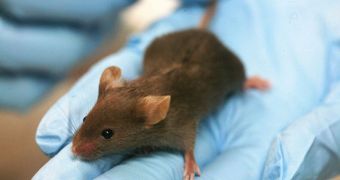Researchers have recently determined that lab mice can eliminate trace amounts of the painkiller morphine, if they are injected with precursor chemicals to the drug. The finding implies that mammals are capable of synthesizing the complex compound inside the body, which may help them cope with various types of pain. Details of the work appear in the April 26 issue of the esteemed publication Proceedings of the National Academy of Sciences (PNAS), Nature News reports.
The results also suggest that mammals may have developed the biochemical machinery needed to produce morphine independently than the opium poppy, the plant from which the substance is usually derived. It's not at all uncommon in nature for two species to gain the same ability through different evolutionary mechanisms, experts at the Donald Danforth Plant Science Center in St Louis, Missouri, say. The team here conducted the investigation under the directions of expert Meinhart Zenk.
“This paper seems to be one of the most definitive I've seen. They've convincingly shown that there's a pathway there which could possibly produce morphine,” says of the research University of California in Los Angeles (UCLA) neurobiologist and opioid drugs expert Chris Evans, who was not a part of the study. Morphine has been in use for many years, because it's very potent at calming down severe pain. However, it sort of fell out of grace with healthcare professionals when other alternatives became available, due to its potential addictiveness.
Scientists have hypothesized a long time ago that many species of mammals could be able to produce the drug, given the fact that investigations revealed the existence of specialized receptors in the brain, that readily bind to it. But studies on whether the substance is actually synthesized inside the body have been plagued with controversy, on account of the fact that it's very difficult to ensure that morphine sources do not exist in the food or environment of lab animals.
In the experiments, mice were injected with various precursors of morphine, and then had their urine analyzed. The researchers were eventually able to find traces of several opiates, including codeine (commonly used in cold and flu medication), oripavine and morphine. The team used a sensitive analysis method called mass spectrometry to identify the compounds. It was also revealed that, while the last stages of morphine production do not differ in plants and animals, the first few do. This led the researchers to conclude that the evolutionary mechanisms which led to this ability were different.

 14 DAY TRIAL //
14 DAY TRIAL //